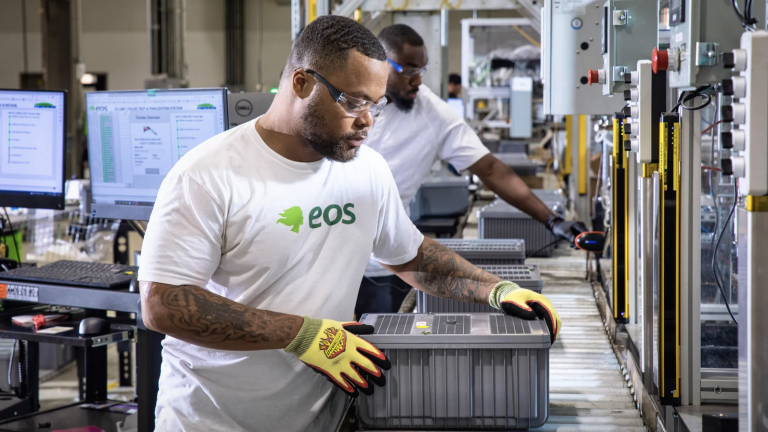
Photo Credit
John Halpern
One of the leading companies offering alternatives to lithium batteries for the grid just got a nearly $400 million loan from the US Department of Energy.
Eos Energy makes zinc-halide batteries, which the firm hopes could one day be used to store renewable energy at a lower cost than is possible with existing lithium-ion batteries.
The loan is the first "conditional commitment" from the DOE's Loan Program Office to a battery maker focused on alternatives to lithium-ion cells. The agency has previously funded lithium-ion manufacturing efforts, battery recycling projects, and other climate technologies like geothermal power.






